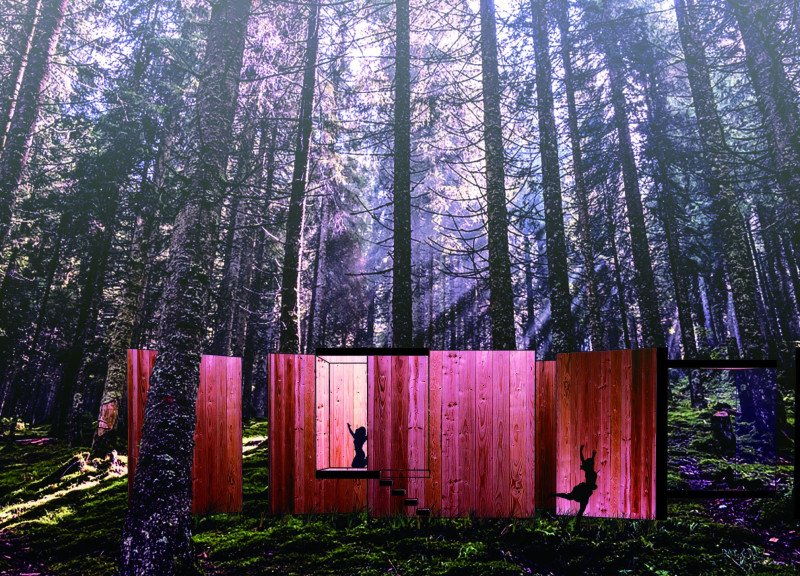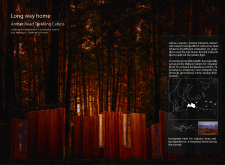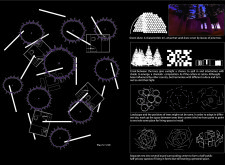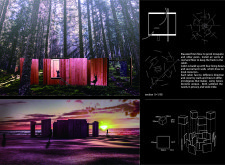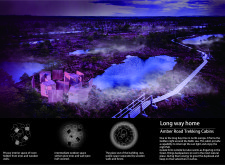5 key facts about this project
Functionally, the project is designed to serve multiple purposes, providing spaces for community interaction, work, and leisure. Its layout is carefully crafted to facilitate seamless movement and accessibility, ensuring that all areas are connected and inviting. This consideration of user experience is a central theme throughout the design, where each element contributes to a cohesive environment that fosters collaboration and engagement.
The essence of the project lies in its thoughtful integration of various materials and design features that enhance both the visual and structural integrity of the building. A significant aspect of the design is its use of reinforced concrete, which not only provides durability but also allows for diverse spatial configurations. The texture and finish of the concrete are thoughtfully chosen to create a warm ambiance, contrasting effectively with the sleek, tempered glass that defines the structure's façade. This glass not only maximizes natural light ingress but also establishes a connection to the exterior, blurring the boundaries between indoor and outdoor spaces.
Wood elements are incorporated throughout the interior, adding warmth and a tactile quality that complements the more industrial materials used. The choice of oak wood for fixtures and furnishings introduces an organic element that softens the overall aesthetic while enhancing the guest experience. This combination of materials exemplifies a balanced approach to modern architecture where functionality meets an appeal to the senses.
The project uniquely addresses environmental considerations through several sustainable design strategies. By incorporating green roofs and rainwater harvesting systems, this architecture minimizes its ecological footprint, demonstrating a commitment to responsible design practices. Furthermore, the landscaping around the building features native plant species, which not only enhances the site’s biodiversity but also reduces water consumption, fostering a sustainable relationship between the built environment and nature.
The circulation within the space is designed with great care, allowing for an intuitive flow that guides visitors naturally from one area to another. The layout incorporates open spaces that promote interaction while also providing quieter areas for reflection and retreat. The distribution of light throughout the building is meticulously planned; strategic openings and skylights invite daylight deep into the interior, creating an inviting atmosphere that evolves with the time of day.
Innovative structural solutions are evident in the project, showcasing a blend of form and function that contributes to its distinctive character. The roofline, for instance, features dynamic angles that create visual interest while also serving practical purposes, such as enhancing drainage and optimizing energy efficiency. These elements highlight how architectural ideas can be both aesthetically pleasing and immensely practical.
This project stands as an example of modern architecture that respects and responds to its surroundings while pushing the boundaries of traditional design. Its thoughtful integration of sustainable practices and innovative materials make it a noteworthy addition to the architectural landscape. For those interested in a deeper exploration of this project, including its architectural plans, architectural sections, and other aspects of its architectural designs, further details are available for review. Engaging with this presentation will provide a richer understanding of the project’s unique qualities and its place within contemporary architecture.


